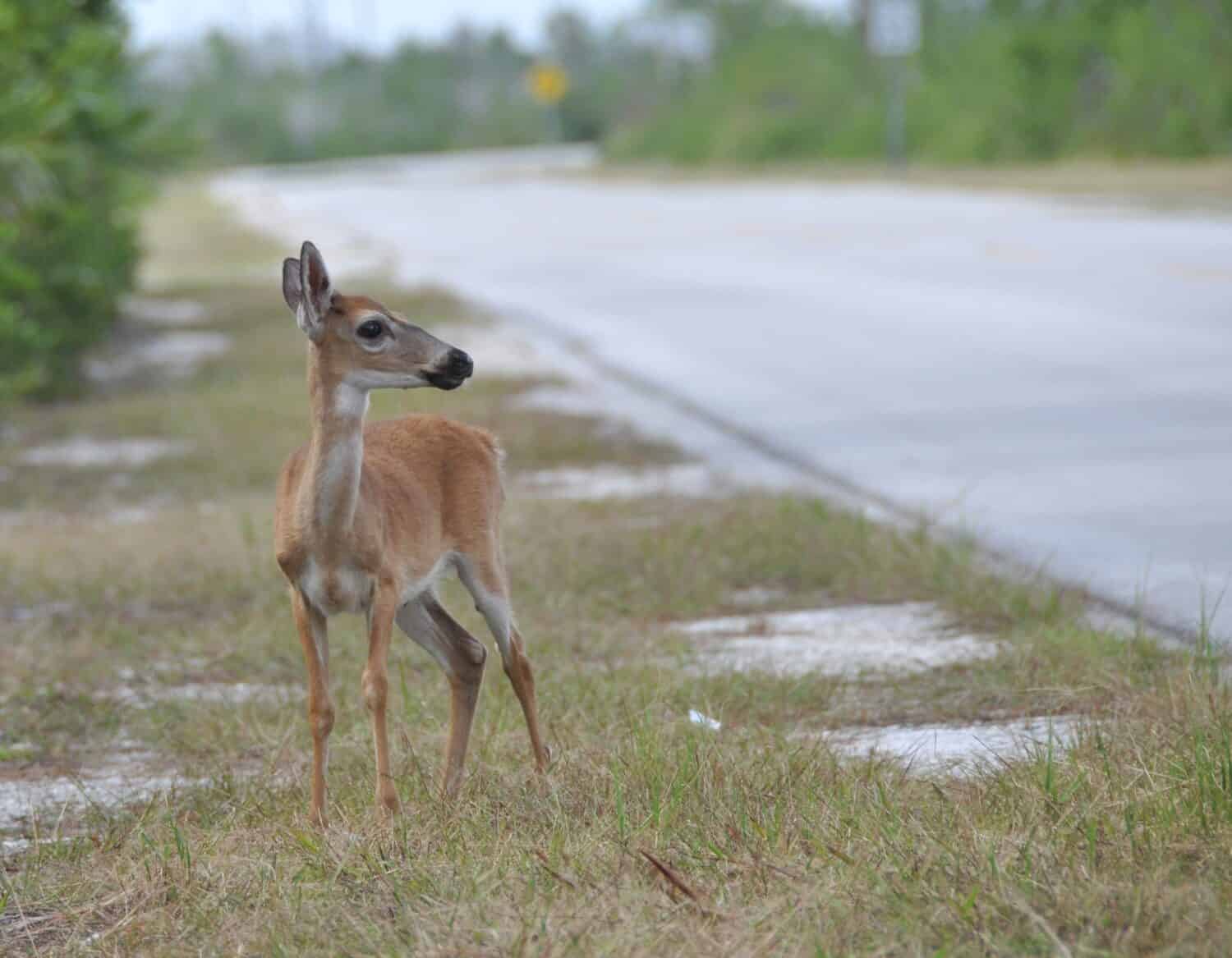Explore the remarkable wildlife of Idaho’s tallest mountain – Mount Borah. Discover the diverse range of animals that inhabit the peak and the surrounding forest area within the Salmon-Challis National Forest, where this towering mountain stands at approximately 12,655 feet.
While enjoying recreational activities like picnicking, fishing, camping, or hiking on Borah Peak, be prepared for frequent wildlife encounters, particularly in the Wilderness Study Area. While most animals are harmless, exercise caution and beware, as some can pose a threat if provoked.
On the flip side, Mount Borah presents exciting prospects for capturing stunning photographs of rare and exquisite animal species and the chance to obtain game meat through permitted hunting, offering a unique experience for wildlife enthusiasts.
1. Bighorn Sheep
The bighorn rocky mountain sheep (Ovis canadensis) is one of the dominant animals roaming Mount Borah. During winter, they wander around the higher elevations of the mountains, such as the steep slopes and rocky terrains. When it gets slightly warmer, bighorn can mostly be found around grassy slopes and alpine meadows in the lower elevated areas.
The distinctive features of the bighorn sheep are its brow-grey coat with a white patch, apparent body size, and curved horns. The male (also known as rams) horns are the largest, weighing around 30 pounds and extending over three feet, while female species (or ewe) have much smaller horns that don’t exceed half a curl.
Male bighorns live solitary lives, while females stay in herds with their young ones. Rocky Mountain bighorn sheep on Mount Borah sustain themselves by consuming a diet rich in grass, shrubs, sedges, and other green plants from the mountain’s vegetative regions. Their intricate digestive systems enable efficient processing and nutrient extraction from the surrounding vegetation.
Remarkably, the bighorn sheep species inhabiting Mount Borah is classified as one of the least endangered animals by the International Union for Conservation of Nature (IUCN). This recognition highlights the positive conservation efforts and relatively stable population of these magnificent creatures on the mountain.
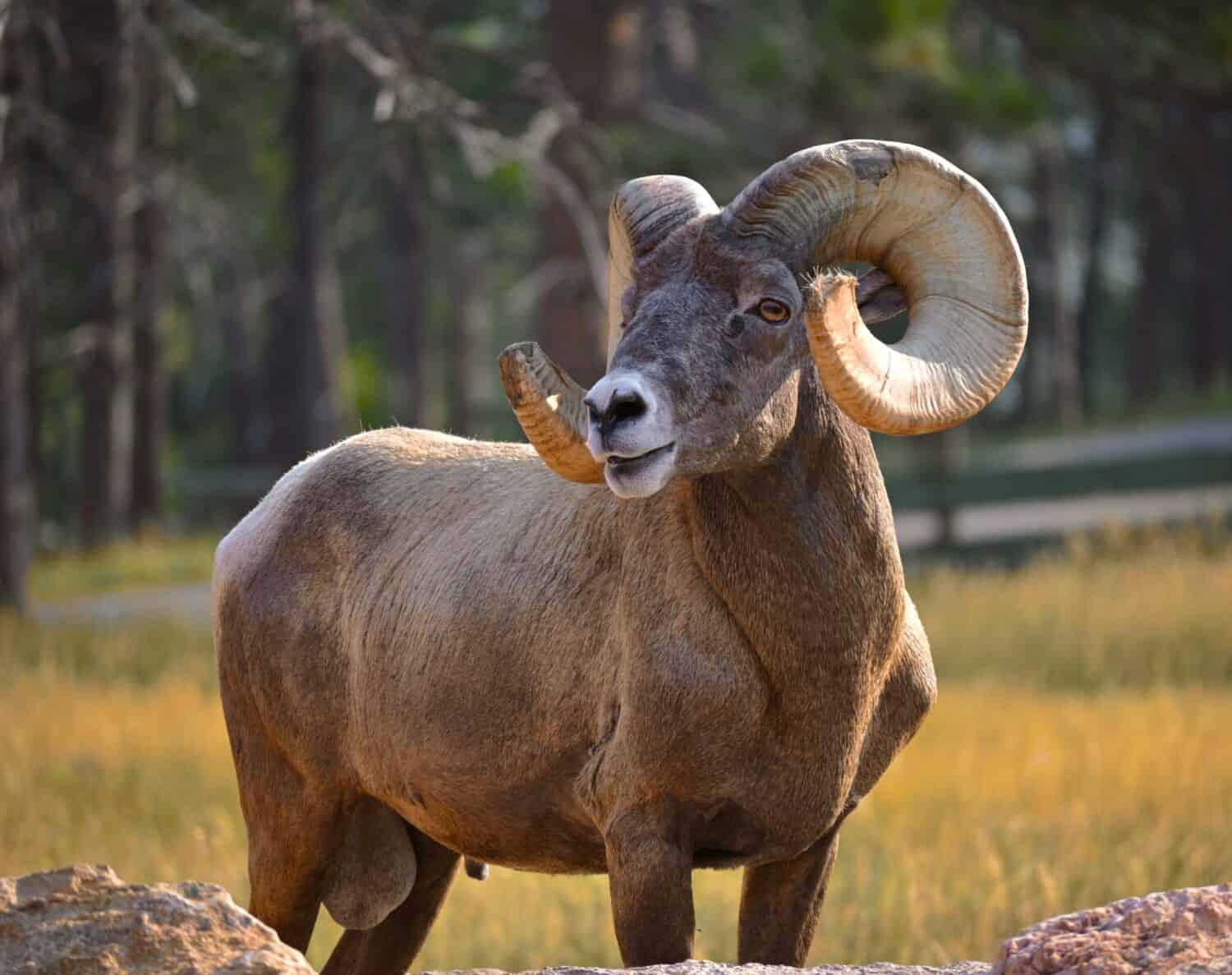
Male bighorn sheep have horns that weigh roughly 30 pounds and can extend over three feet.
©Wirestock Creators/Shutterstock.com
2. Mountain Goat
Rocky mountain goats (Oreamnos americanus) or billies (for males) and nannies (for females) are the most well-adapted animals in the Borah mountainous regions. Both species have a unique appearance comprising white fur, black lips, horns, and hooves.
Each mountain goat also has an undercoat for extra insulation during the cold winter. The only difference between the male and female mountain goats is the horn size. Males grow larger and thicker horns that curve more backward with age than females.
You can spot a mountain goat in the elevated areas of Borah Peak, whether it’s the warm or cold season. Their thick bodies and hard ring-shaped hooves with spongy centers allow them to access food, such as grass, mosses, herbs, and other herbivorous vegetation, even on steep slopes, meadows, cliffs, and rocks.
Unless provoked, mountain goats are harmless and love socializing with each other in herds. Occasionally, you may see the male species engaging in faceoffs and sparring matches using their large horns when viving for the attention of a female partner.
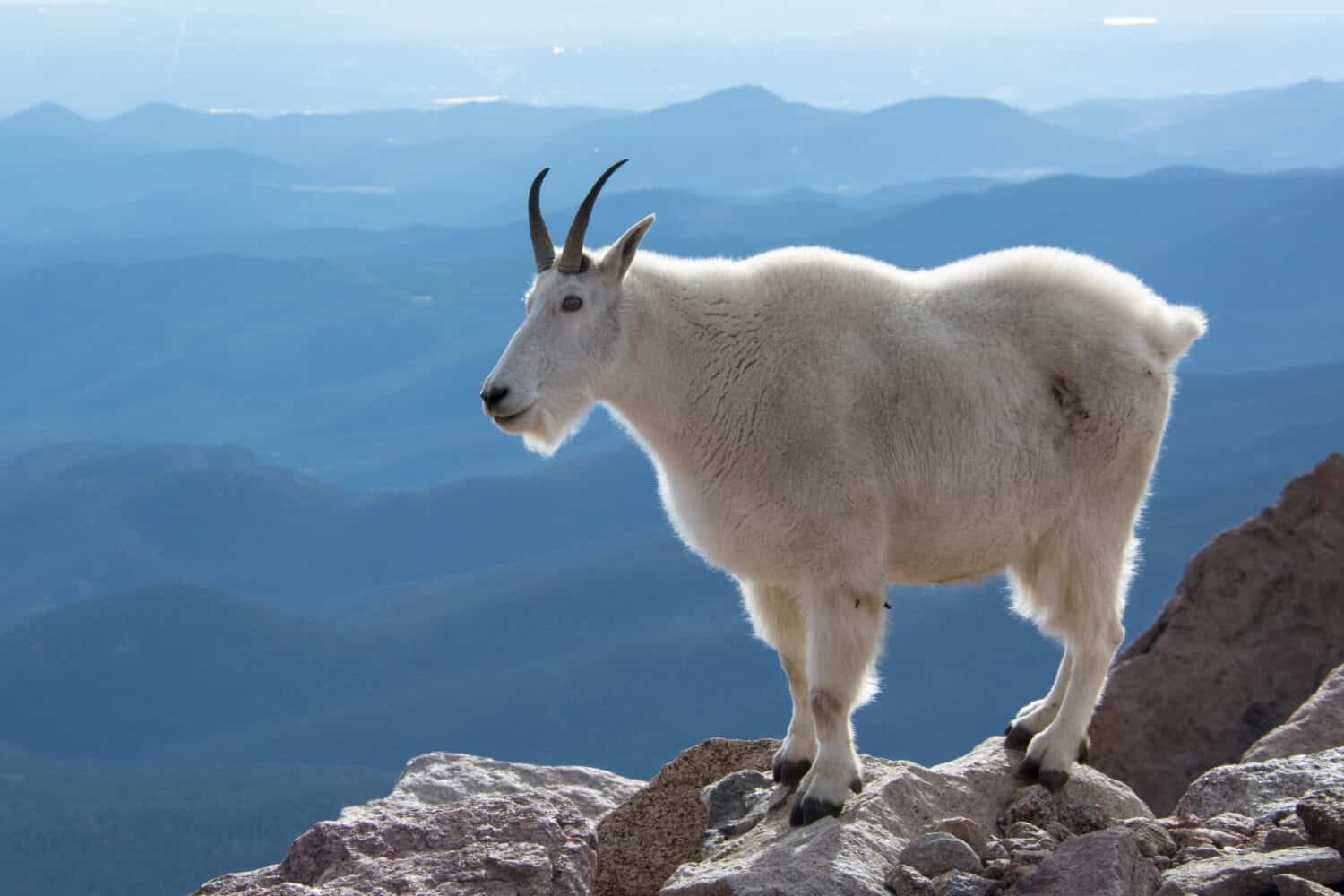
Rocky mountain goats are the most well-adapted animals in the Borah mountainous regions.
©Eivor Kuchta/Shutterstock.com
3. Deer
Several species belonging to the deer family roam around Mount Borah and its surrounding areas. Although they’re all subspecies of the deer and have almost similar looks, they differ slightly in behavior and lifestyle.
Mule Deer
The mule deer, or Odocoileus hemionus, has the largest population of all the subspecies in the mountain. Both male and female mule deer have large-pointed ears resembling a mule, hence their name. The male mules also called bucks, have fork-shaped antlers covered by velvet skin that sheds yearly. In contrast, female mule deer, referred to as does, do not grow antlers.
Mule deer can be seen roaming around meadows, valleys, creeks, and rocky slopes. They mainly feed on leaves, shrubs, and grass but can browse on plants, depending on the season.

Both male and female mule deer have large-pointed ears resembling a mule, hence their name.
©Tom Reichner/Shutterstock.com
White-tailed Deer
The white-tailed deer, also scientifically known as Odocoileus virginianus, have a white-tipped tail and a brownish coat. The white tip of their tail often rises when it detects danger or threats nearby.
The white-tailed deer primarily occupies the forest and grassland areas of Mount Borah, feeding on grass and leaves. However, they may venture to higher meadows and foothills in search of food on occasion.
Black-tailed Deer
Black-tailed deer or Odocileus hemionus columbianus is a subspecies of the mule deer and are the smallest in number of all animals that roam around Idaho’s tallest mountain. Unlike the white-tailed deer with a white-tipped tail, this species has an all-black tail and large fuzzy-like ears.
You can spot a black-tailed deer on Borah Peak when it’s warm and closer to Salmon-Challis Forest in winter. They mainly feed on grass, twigs, and other green vegetation.
4. Coyote
Coyotes or Canis latrans are animals that roam the dry parts of Mount Borah. Coyotes, part of the canine family, bear a resemblance to small and medium-sized dogs or gray wolves in their appearance.
The defining characteristics of coyotes from other canines are their bushy tails, slender body size, and protruding snouts. Coyotes can also have a black or brown appearance, but many around the mountain have grey-brown coats with red patches around their head and legs.
The main habitats of coyotes on the mountain are the open plains and desert areas. This is where they primarily hunt for insects, birds, mammals like deer, and reptiles such as snakes and lizards.
Coyotes exhibit adaptability, thriving in wooded and grassland areas in search of food. While generally non-aggressive, male coyotes may resort to defensive attacks when faced with territorial threats from other animals.
While camping near the mountain, you may experience the sound of coyotes howling in the evening. Currently, coyotes are classified as non-endangered species, and their population has noticeably flourished in the surrounding region.
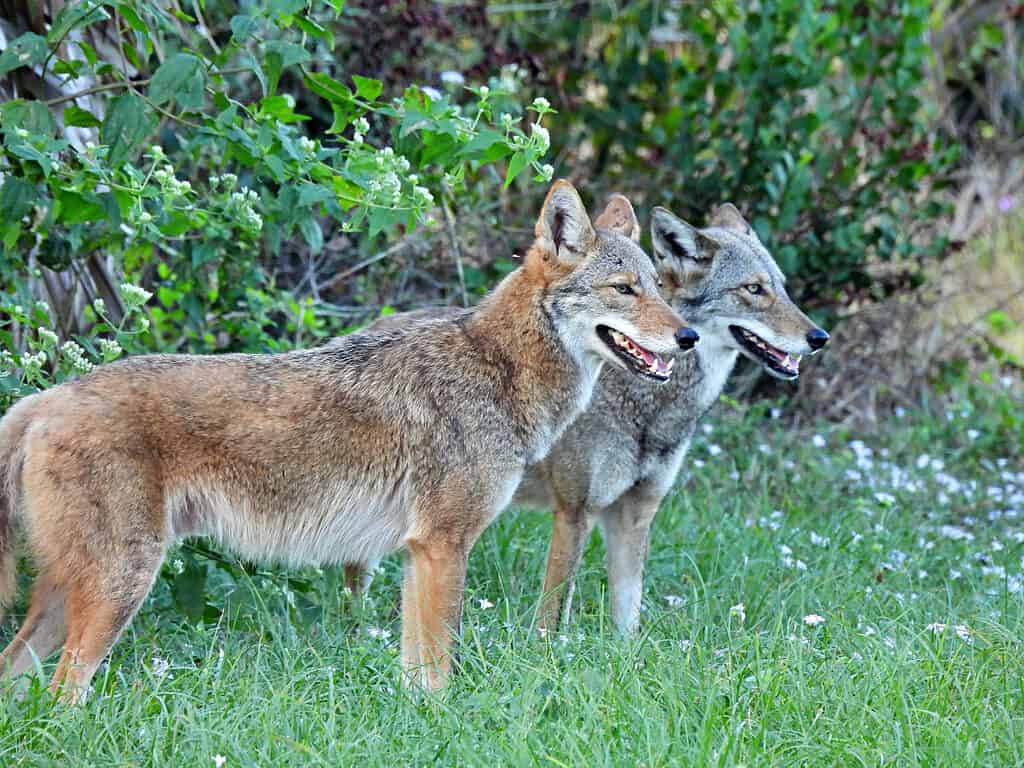
Coyotes exhibit adaptability, thriving in wooded and grassland areas in search of food.
©iStock.com/passion4nature
5. Black Bear
Of all the bear species, the black bear or Ursus americanus is the most predominant around Mount Borah and the nearby forest. Unlike grizzly bears, black bears have no hump on the back, are smaller in size, and have black claws.
Black bears exhibit a wide range of fur coat colors, spanning from black to blonde, blue, brown, or cinnamon. You can find black bears far from campsites or human presence on the mountain.
Black bears adapt their habitats based on seasonal changes, favoring forests in warmer weather and rocky semi-arid terrains during colder seasons.
They have an omnivorous diet, encompassing both plant and animal consumption. In spring and summer, they indulge in emerging plants, fruits, beechnuts, honey, and acorns. In winter, when resources are scarce, black bears scavenge carcasses of dead animals and can resort to hunting deer and moose if hunger strikes.
Black bears generally prefer secluded areas over human encounters, but they possess a keen sense of smell to detect other animals in their territory. It is advisable to avoid startling the bear and triggering a defensive response by being cautious while exploring the mountains.
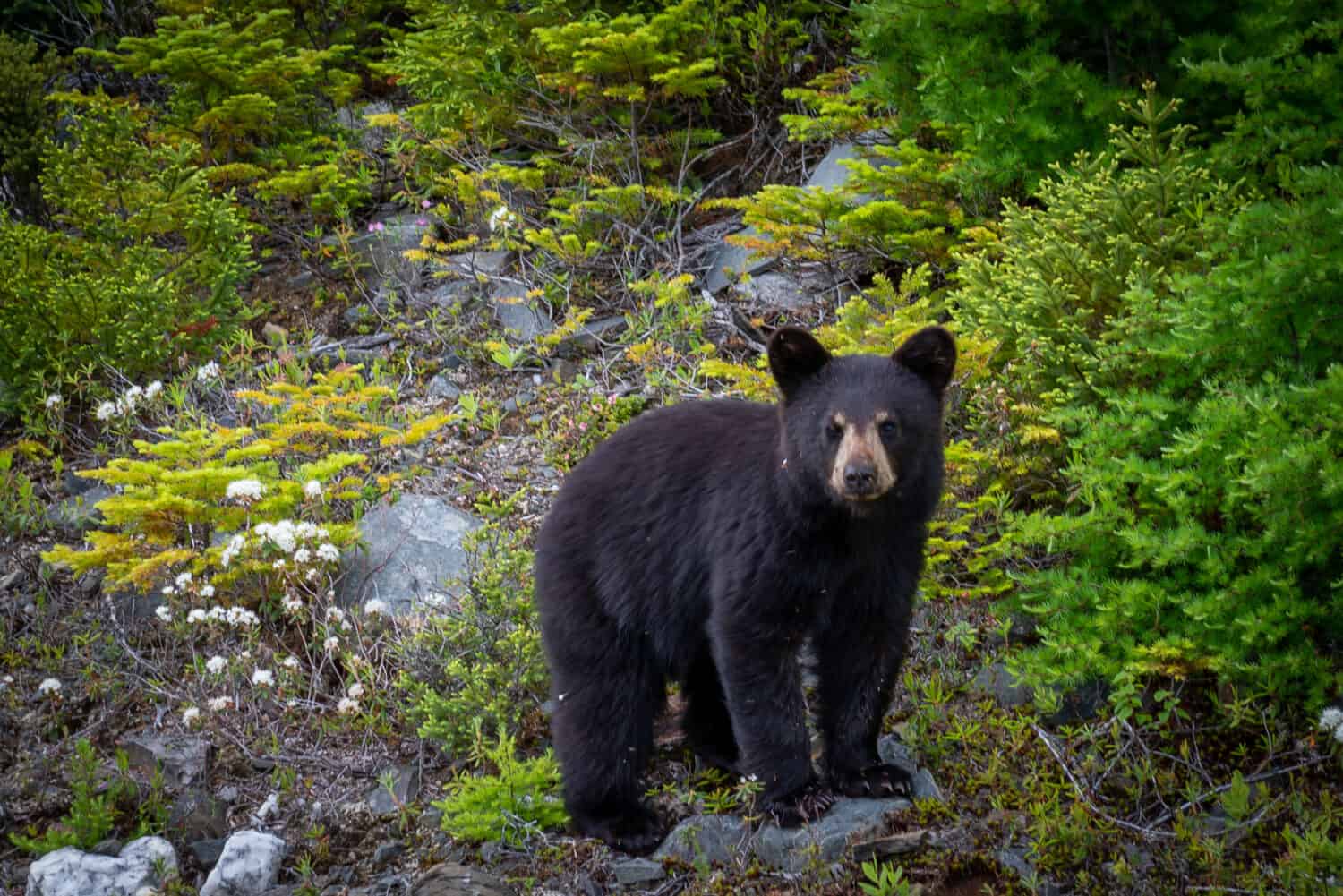
Of all the bear species, the black bear is the most predominant around Mount Borah.
©Dolores M. Harvey/Shutterstock.com
6. Moose
Although not historically from the region, there have been sightings of Moose or Alces americanus around Salmon-Challis National Park. On the mountain, moose generally live near water bodies such as small rivers, streams, and lakes but can migrate higher in search of food when these sources run dry.
The distinctive features of a moose are its dark brown coat, humped back, long legs, flap skin under the chin, and broad antlers. Also, male moose (or bulls) have slightly larger antlers than females (or cows).
During the summer, you’ll find moose primarily feeding on grass, forbs, and herbs in the grassland areas. When these sources dry up in winter, these animals shift to eating aquatic plants and browsing on twigs and leaves on trees around the mountain.
The moose is active during the day and can be seen when you’re hiking or camping in the mountains. Unless threatened, they’re not dangerous or aggressive to humans and other wild animals.

The distinctive features of a moose are its dark brown coat, humped back, long legs, flap skin under the chin, and broad antlers.
©ArtBBNV/Shutterstock.com
7. Elk
The elk, or wapiti (meaning white rump), is the second-largest mammal in the deer family after the moose. A typical elk can weigh an average of 400 to 1,100 pounds, with males weighing more than females.
All elk species have a thick-brown coat, dark, slender legs, and yellow-brown or white patches on select body parts. Bulls or males have white-brown patches and shaggy manes on the throat or neck region, whereas females have theirs around the abdomen.
Elk primarily graze on grass during warmer seasons but migrate to higher elevations in the mountains during colder periods to feed on tree barks and shrubs. Being social creatures, elk form groups known as harems. Elk generally only resort to aggression if they or their harem perceive a threat.
That said, the different subspecies of the elk you’re likely to come across in Mount Borah include:
- C. canadensis roosevelti (Roosevelt’s elk)
- C. canadensis manitobensis (Manitoban elk)
- C. canadensis nannodes (Tule elk)
- C. canadensis nelsoni (Rocky Mountain elk)
These animals belong to the same species, exhibiting slight variations in behavior and appearance while sharing common traits and characteristics.
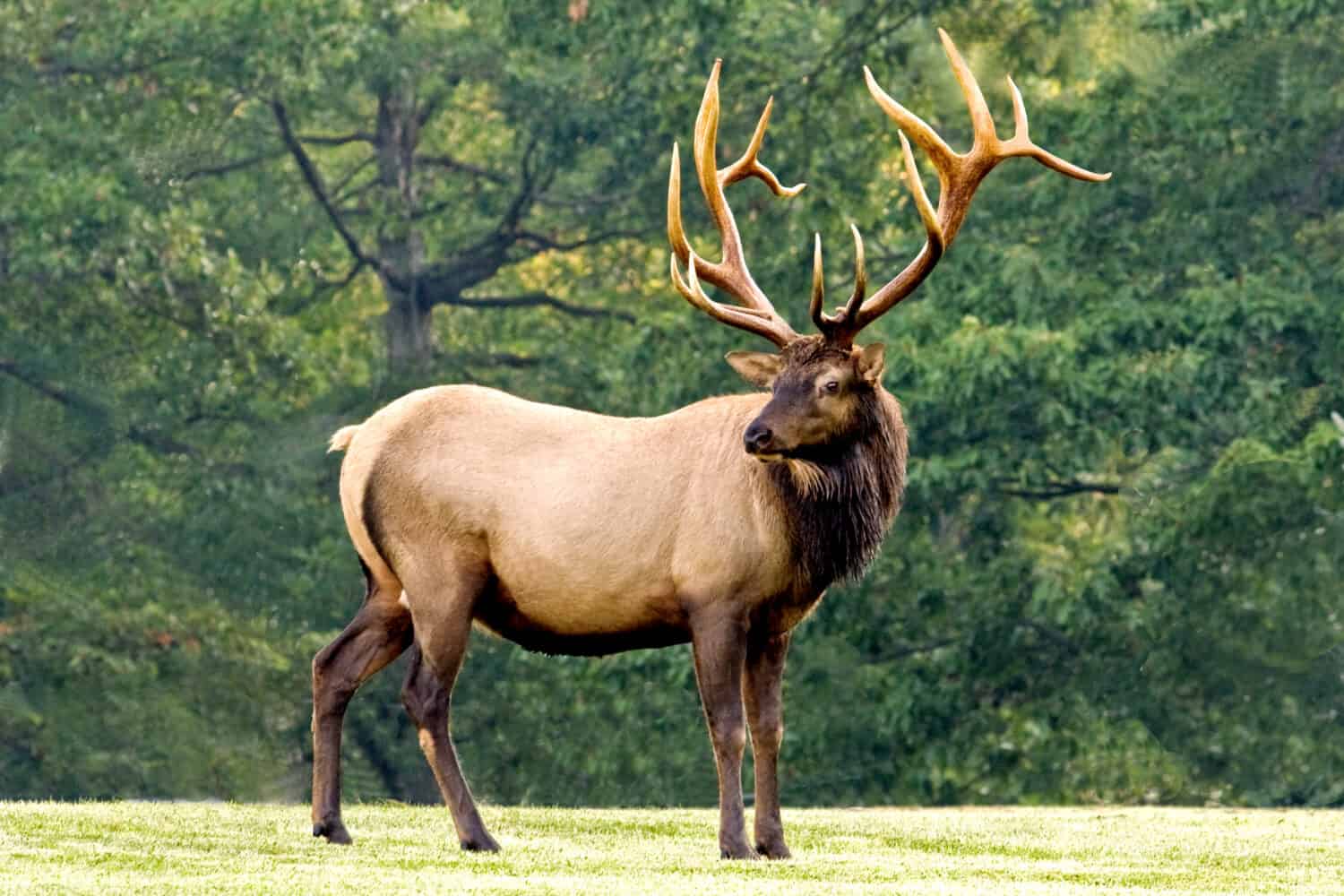
A typical elk can weigh an average of 400 to 1,100 pounds.
©Paul Staniszewski/Shutterstock.com
8. Western Tanager
The western tanager or Piranga ludoviciana is a songbird found in Mount Borah and the surrounding forest area. Most adult species of this bird have a similar striking appearance consisting of a bright yellow body, orange face, and black wings. On the other hand, juveniles tend to have gray backs and wings and an overall greenish look.
Despite their vibrant plumage, these birds are elusive to spot as they traverse the mountains and forests. They prefer the lofty canopies, where they nest and forage on insects throughout the summer season.
Other foods that the western tanager consumes include fruits and berries, especially when mating, as this helps increase their energy.
Lastly, you can only find the western tanager on Mount Borah during the summer. After mating, these birds usually migrate toward Central America and Mexico, where they spend most of the winter. To catch a glimpse of these birds in mountainous regions, binoculars are essential.

The western tanager has a bright yellow body, orange face, and black wings.
©Laura Mountainspring/Shutterstock.com
9. Golden-Mantled Ground Squirrel
The golden-mantled squirrel, or Callospermophilus lateralis, is a ground squirrel belonging to the rodent family. While they may look like tiny chipmunks, these squirrels are easily distinguishable by their gray-brown fur and golden stripes on the head and back.
Golden-mantled ground squirrels feature a lighter underside compared to their back, along with sharp paws and small round ears. While they remain active throughout the summer, encounters with these squirrels are typically limited to daylight hours during other seasons.
The predominant areas of the mountain that these squirrels occupy are rocky areas and meadows. However, when these surfaces become cold during winter, they migrate to warmer places where they hibernate for about three to four months.
Regarding their feeding patterns, golden-mantled ground squirrels prey on animals and plants. Their food consists of nuts, seeds, berries, mushrooms, fruits, insects, fungi, small mammals, and birds. Though not listed as endangered, golden-mantled squirrels are threatened by human disturbances in the region.
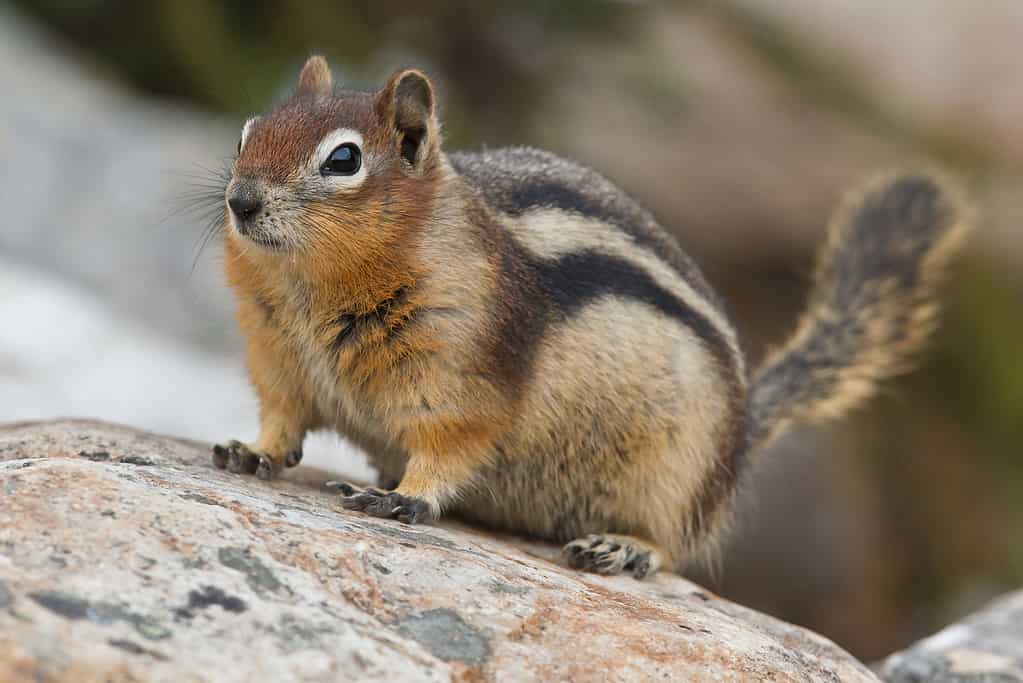
Golden-mantled ground squirrels feature a lighter underside compared to their back, along with sharp paws and small round ears.
©Rafa Irusta/Shutterstock.com
10. Bald Eagle
Bald eagles, or Haliaeetus leucocephalus, are among the majestic animals that roam around Idaho’s tallest mountain. These species of birds can be seen in open water sources, such as rivers and small creeks, feeding on fish and small organisms that live in water.
The bald eagle is easily recognizable by its remarkable features, including a white tail and head, complemented by a dark brown body and an impressive wingspan of up to 7.5 feet in adult eagles. Renowned for their exceptional flying abilities, bald eagles captivate with their striking physical appearance.
In addition to frequenting rivers for hunting and nest-building, bald eagles grace the mountain skies, soaring at impressive speeds. With their exceptional vision, they effortlessly spot prey from elevated vantage points and swiftly execute acrobatic flight maneuvers to seize their target.
Today, the populations of bald eagles on Mount Borah are increasing due to stringent conservation efforts.

Bald eagles are among the majestic animals that roam around Idaho’s tallest mountain.
©FloridaStock/Shutterstock.com
11. Yellow-bellied Marmot
The yellow-bellied marmot or Marmote flaviventris belongs to the species of rodents that stay underground, such as rats, bilby, and moles. It’s typically found around the subalpine and alpine areas, such as meadows, rocky terrains, and grassland mountain areas.
You can also spot the yellow-bellied marmot in higher parts of the mountain during the cold season, looking for food.
Its main distinguishing features are:
- A red-brown upper body
- Yellow bellow
- A significant tail that wags every other minute
- Small ears
As one of the largest rodents in the mountain region, weighing about 3 to 11 pounds and measuring 20 to 28 inches long, it’s easy to come across this animal roaming on the mountains. They’re naturally harmless and feed on grass, forbs, flowers, and seeds in late summer.

As one of the largest rodents in the Mount Borah region, the yellow-bellied marmot weighs 3 to 11 pounds.
©Eivor Kuchta/Shutterstock.com
Know All About The Animals That Roam Mount Borah – Idaho’s Tallest Mountain
Mount Borah and its surrounding forests host various animals that roam around the rocky terrains, meadows, grasslands, creeks, and the higher points of the mountain. These animals can be found in different mountain parts during different seasons. Some go higher up the mountain when it’s cold and climb down during the warmer seasons, while others do the opposite.
Exploring Mount Borah provides the opportunity to witness these fascinating creatures in their natural habitat, reminding us of the rich biodiversity and enchanting beauty of Idaho’s wilderness.
Whether it’s the captivating calls of coyotes or the breathtaking sight of a bald eagle in flight, encountering these animals on Mount Borah is an experience that immerses us in the wonders of nature and leaves lasting memories.
Thank you for reading! Have some feedback for us? Contact the AZ Animals editorial team.

